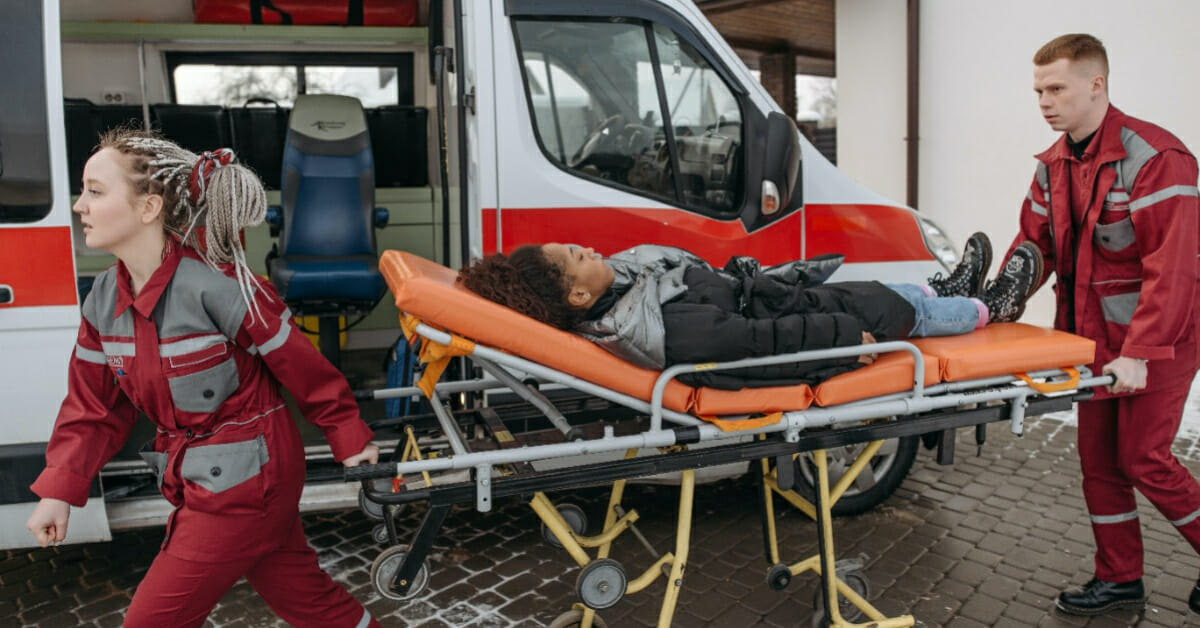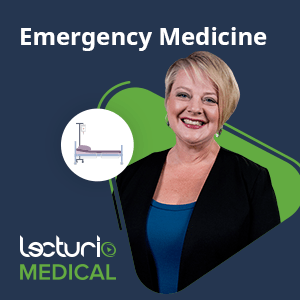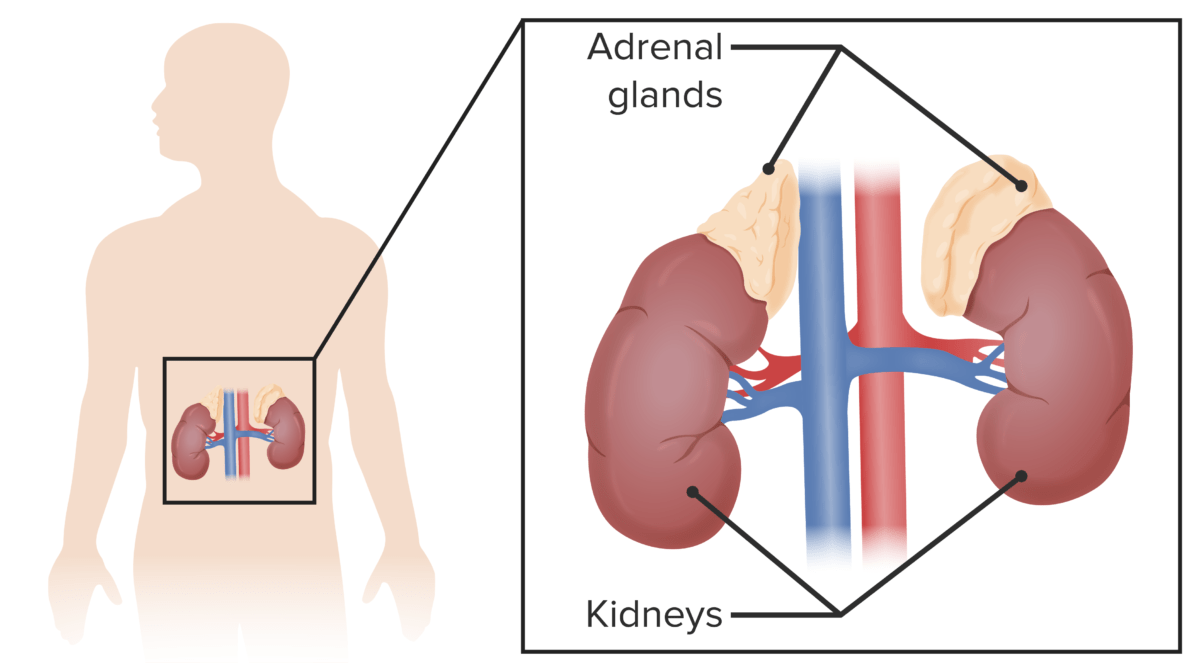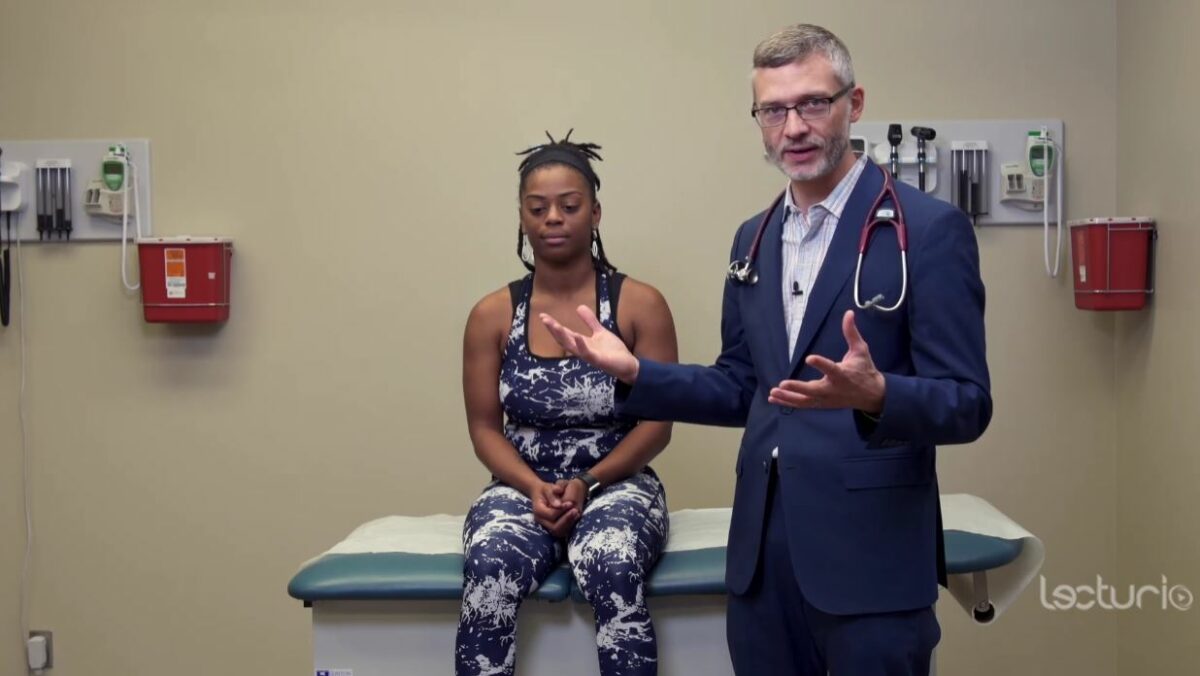When studying emergency medicine, primary and secondary surveys were among the first things I learned. As a medical student, you’ll be expected to know them by heart. In emergencies, you won’t have time to check your notes. The checklist of everything you need to assess should already be in your head.
That seems like a lot to ask, but that’s where your preparation will pay off: Take Lecturio’s online course about emergency medicine to get prepared for real-life situations. Here are two mnemonics you must know by heart when you see a trauma patient: ABCDE and AMPLE. Think of them as checklists you need to run down with the patient to improve their chances of survival.
Take the Course: Emergency Medicine
Cover all emergency medicine essentials with Dr. Julianna Jung and Dr. Sharon Bord from Johns Hopkins University
Why Is This Important?
The primary survey was made to assess patients and address life-threatening injuries rapidly. While not perfect, it addresses the most common and immediate causes of death within 5 areas. These causes include:
- Airway obstruction
- Pneumothorax
- Massive hemorrhage, both internal and external
- Flail chest
- Cardiac tamponade
- Stroke
Unlike the usual pattern of taking a history and then doing a physical exam before treating the patient, the primary survey does both at once. So while you’re addressing all the areas, you can take a short history on the side. A more extensive history and head-to-toe PE are saved for later when the patient is stable. That part is done in the secondary survey.
Primary Survey
The ABCDE assessment: What is this about?
As I mentioned, the primary survey should be done before anything else is done to the patient. It’s a must-do for all trauma patients you come across. Take note that all this happens fast. Some areas are even assessed simultaneously by different team members.
Remember that the goal is to stabilize the patient. To do this, we prioritize two things most: oxygen and blood flow. Why? Because if there’s no oxygen, parts of the body will undergo ischemia. The damage to affected tissue left untreated for too long can become irreversible.
The primary survey goes on until the patient is stable. Their vitals and physical signs should no longer show signs of shock or deterioration. Basically, it’s when the patient is no longer dying or in danger of dying. Even stable patients should still undergo primary assessment, to make sure that nothing is missed.
Airway with cervical spine precautions
First, ensure the patency of the patient’s airway. How do you know if there’s good patency? Ask the patient a question. Their airway is open if their voice is clear and they’re not struggling to get words out. If not, a chin lift or a jaw thrust can be done. For patients you think might have a cervical spine or neck injury, stabilize it with a cervical collar.
In this part, you should look for any signs of airway obstruction, facial or neck injury, and even airway lacerations. Consider a definitive airway like intubation or cricothyroidotomy if the patient still can’t breathe well. This part is separate from breathing, although they are closely related.
Breathing and ventilation
Ensure that the patient is getting oxygen to different parts of their body. How do you assess this? Take their oxygen saturation and respiratory rate. Of course, normal vitals don’t rule out a problem with ventilation. Inspect the patient. Check for symmetric chest rise or any chest injuries. Use a stethoscope to auscultate the lungs.
Look for problems with breathing. If the patient is breathing too fast, too slow, or irregularly, that’s a problem. Pneumothorax and hemothorax are life-threatening. As such, they must be recognized and managed quickly. In general, all patients should have supplemental oxygen. It’s up to the team leader to decide which route they want to use to give oxygen to the patient.
Circulation with hemorrhage control
Of course, there’s no point in getting oxygen to the lungs if it isn’t being distributed to where it needs to be. Thus, the next priority should be circulation. Patients can come in already bleeding, but some can bleed internally. The latter is hard to identify, because you can’t directly pinpoint the injury location. So how do you assess circulation? Check the blood pressure and heart rate of the patient. Check for signs of shock such as pallor, oliguria, increased capillary refill time, weak pulses, etc.
Consider hypovolemic shock and other types of shock. Your goal is to stop the bleeding and replace fluids that were lost. Take note that the first signs are seen when 15% to 30% of blood is lost. So, like every part of the primary survey, circulation should be monitored even after it’s been assessed and addressed.
Disability
This usually refers to the patient’s neurologic status. The AVPU assessment is done first to check how responsive the patient is. Each part describes to which stimulation the patient responds. AVPU stands for:
- Alert, where the patient is awake and alert
- Voice, where the patient responds to someone’s voice
- Pain, where the patient only responds to pain
- Unresponsive, where the patient doesn’t respond to anything
AVPU is impaired when it’s anything below Alert. When that happens, GCS (Glasgow Coma Scale) is then used to objectively score the extent of their disability. You should be familiar with the GCS, which is a scale that helps measure and describe a patient’s level of consciousness. Usually, this part is to see if the patient had a stroke or other acute neurological etiologies. So, we also measure glucose levels since hypoglycemia can mimic a stroke. For stroke, there are other scales used to assess the patient.
Exposure and environmental control
This part is where you check the temperature of the patient and for possible burns. You’ll have to expose the patient by removing their clothing to see any apparent life-threatening injuries. Hypothermia can quickly destabilize them so it’s essential to control the room temperature and use blankets to keep the patient warm.
Related videos
Secondary Survey
The AMPLE assessment: What is a secondary survey?
Not all significant injuries are immediately apparent. The secondary survey serves to investigate emergent conditions that are missed in the primary assessment. Apart from other injuries, comorbidities must be identified because they can also complicate the patient’s case.
So, what is the secondary survey? It’s a quick interview and head-to-toe examination. It is done once the patient is stabilized. However, some hospitals do primary and secondary surveys together when working with a team. The primary survey is repeated if a patient destabilizes during the secondary survey. AMPLE is a mnemonic device commonly used when taking a history from the patient:
Allergy
This question checks if the patient is allergic to any food or medications. Allergies may have contributed to the patient’s symptoms. They will also restrict which drugs and food the patient can take over the course of treatment.
Medications
This includes medications the patient took for their current condition. Knowing a patient’s maintenance medications can hint at any comorbidities. These medications also have various side effects that can cause the patient’s symptoms.
Previous medical history
This part looks into the patient’s previous medical conditions. Previous surgeries, hospital admissions and current comorbidities are also asked about. It also helps to check the patient for any scars later in the physical exam. For example, I had a patient with a positive Murphy’s sign, which points to cholecystitis. However, upon asking about the patient’s medical history, they underwent a cholecystectomy. So, we had to look into other causes of this symptom.
Last meal
What you put into your mouth matters more than you realize. Food and drinks can affect the human body in various ways. Apart from allergic reactions, they can act as carriers of disease-causing microbes. Make sure to ask what time their last meal was, because malnourishment and dehydration need to be addressed immediately.
Events/Environment related to injury
These are the events leading up to the time of injury. Usually when it comes to trauma patients, you’ll want to elicit the time of injury (TOI), mechanism of injury (MOI), and place of injury (POI). However, if time permits, you’ll also want to know what the patient was doing that led to injury. The patient’s exposure can cause cardiac, pulmonary, and other threats to their health.
Physical Examination
This is the part where you do a head-to-toe examination to check for immediate threats to the patient’s health. Preferably, it should go in sequence so that nothing is overlooked:
- Vital signs
- Head and Face
- Neck
- Chest
- Abdomen
- Extremities
- Pelvis
- Neurologic
- Skin
In the emergency department, my physical exams would be a bit different from how I would do them in wards and outpatient settings. I would usually keep it as short as possible because ED patients need to be treated as soon as possible. This is also because the ED almost always has a constant influx of patients.
Related videos
My Experience
In the ER, I always had to be alert, even during the night shift. Actually, it’s during the night shift you need to be more vigilant. Why? It’s because patients usually don’t bother sacrificing sleep over going to the ER unless it’s already something they can’t handle or sleep off.
When a trauma patient comes in in the middle of the night, it’s usually for an accident. People drive faster because there are fewer cars, but the darkness makes it harder to see. In one specific case I remember, the patient came in on a stretcher and already had a neck brace. Doctors, nurses, staff, and medical students moved to help the patient.
The airway step started once the patient was asked questions, to which they responded. Next, the patient was assessed for any difficulty of breathing and visible signs of bleeding. IV access was placed immediately. Afterward, we cut parts of the patient’s clothing to better inspect their injuries. Within seconds, the primary assessment was done.
While this was happening, the students would take the history from the patient’s relatives using the AMPLE format. Once the patient is stabilized, this history is verified with the patient while the PE is done by the doctors on duty. Even at this point, the doctors already start giving orders to the nurses for the next steps in management. In minutes, both assessments were done.
In medicine, you’re usually fighting against diseases. However, in the ER, you’re fighting against time.
You need to know what to do and what the next steps are. More importantly, you must know your role to work well with a team under pressure– even as a medical student. The more efficient you are, the better the outcomes for the patient. So keep these mnemonics in mind, and you’ll survive your ED rotations– and save lives along the way.





